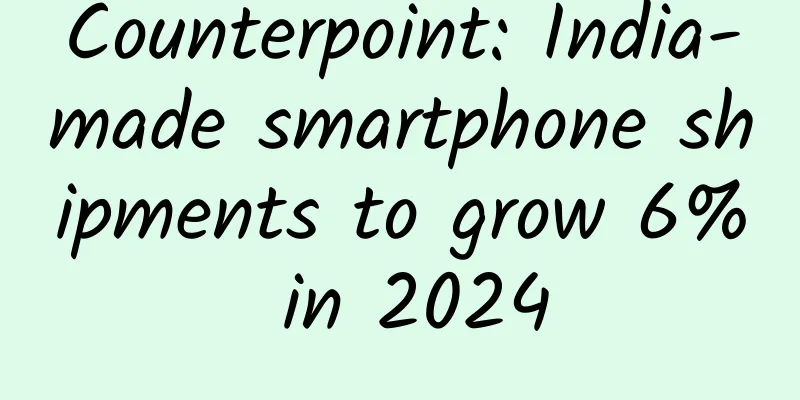Counterpoint: India-made smartphone shipments to grow 6% in 2024

|
According to Counterpoint's India Manufacturing Service Report, driven by the export growth of Apple and Samsung, the shipment of "Made in India" smartphones will increase by 6% year-on-year in 2024. Apple and Samsung together account for about 94% of India's total smartphone exports. In order to achieve the national goal of reducing import dependence and strengthening the position of the global supply chain, both brands have significantly expanded their production scale in India. The Indian government's PLI (Production Linked Incentive) program has effectively promoted global manufacturers to set up or expand production bases in India, ultimately leading to the improvement of local manufacturing capabilities. In 2024, Taiwanese manufacturers accounted for 44% of the total domestic smartphone manufacturing in India, Chinese mainland manufacturers accounted for 30%, Indian local manufacturers accounted for 21%, and Korean manufacturers accounted for 5%. In 2025, Indian local smartphone manufacturing is expected to achieve double-digit growth, and local added value will continue to increase. Focusing on manufacturing companies, research analyst Tanvi Sharma said: "In 2024, Samsung achieved a year-on-year growth of 7% through export growth, continuing to consolidate its leading position in India's electronics manufacturing. Vivo ranked second with a year-on-year growth of 14%. The expansion of offline channels and the strengthening of distribution networks helped it gain a 14% shipment share. According to our shipment tracking data, Vivo also won the championship of smartphone shipments in India in 2024. Foxconn Hon Hai achieved an annual growth of 19% relying on Apple orders, and plans to establish a smartphone display module assembly line to strengthen local manufacturing capabilities. OPPO fell to fourth place with a year-on-year decline of 34% due to intensified brand competition and an increase in the proportion of OPPO/realme outsourcing. Thanks to the expansion of cooperation with Xiaomi and realme, DBG also achieved double-digit growth in 2024." Tata Electronics, with the iPhone 15/16 series as its main driving force, achieved a year-on-year growth rate of 107% in 2024, becoming the fastest growing manufacturer. The company not only expanded its iPhone assembly business, but also entered the chip manufacturing industry through the Dholera semiconductor plant in Gujarat, while building an OSAT (outsourced semiconductor assembly and testing) plant in Assam. Through mergers and acquisitions and diversified cooperation, Tata Electronics has developed into a key player in the global electronics supply chain. In the overall mobile terminal market (smartphones + feature phones), Dixon topped the list of manufacturers thanks to strong shipments of Transsion and Motorola. In the smartphone industry, Dixon achieved 39% annual growth through new cooperation with Transsion and Realme. Multi-brand strategic cooperation and joint venture models have enabled it to achieve significant growth in the Indian terminal manufacturing ecosystem. |
Recommend
Pregnant woman with round belly, is it a boy or a girl?
Although many people know that it is not forbidde...
At what age should vitamin D be supplemented?
#How old should I take vitamin D# In recent decad...
What to do if you have insomnia during pregnancy preparation
Preparing for pregnancy is a task that many coupl...
Why do women get tired easily?
Women have heavy workloads every day as they have...
Will women get fat if they eat too much donkey-hide gelatin?
Many women suffer from some deficiency of Qi and ...
Can I apply for a health certificate when I am pregnant?
Many women will continue to stick to their jobs a...
What is Down syndrome screening 1?
During pregnancy, pregnant women have to do a lot...
Is cupping good for confinement?
Giving birth to a child is extremely physically d...
What to do if you catch a cold during early pregnancy?
During pregnancy, we need to pay great attention ...
Can I drink chrysanthemum when my period comes?
Chrysanthemum is a flower with various shapes. In...
How to relieve uterine contraction pain in pregnant women
Postpartum uterine contraction pain refers to the...
My period has not come for two days.
Some women of childbearing age find that their me...
How long will it take for ovulation to occur if the ovulation test paper shows a positive result?
The uterus is extremely precious to every girl an...
Public toilets vs squat toilets, which one is dirtier? The answer is surprising
When you go to the restroom outside and find a to...









